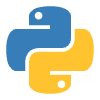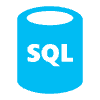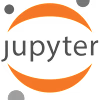Case Studies Over Resumes: Effectively Testing Data Science Freelancers

Case Studies Over Resumes: Effectively Testing Data Science Freelancers
Why Employers Value Real-World Performance
1. Reasons Case Studies Outperform Traditional Resumes
1. They Validate Actual Skill Levels
2. They Reveal Communication Style
3. They Reflect Problem-Solving Mindset
2. Steps To Design an Effective Data Science Case Study
1. Outline Clear Objectives
2. Provide Realistic Data Sets
3. Set Time Frames
4. Score Critical Factors
3. Ways Resumes Still Help in Screening
1. Glimpse at Background
2. Quick Skill Check
4. Benefits of Hybrid Screening on Contra
1. Direct Negotiation
2. Authentic Portfolios
5. Tips To Evaluate Freelancers From a Hiring Manager’s Perspective
1. Look for Domain Adaptability
2. Focus on Clear Explanations
Frequently Asked Questions About Testing Freelance Data Scientists
Why is pay transparency important?
Is a live case assignment more reliable than a take-home task?
Can a newcomer prove skills without a big portfolio?
Moving Forward With the Best Hiring Approach
Case Studies Over Resumes: Effectively Testing Data Science Freelancers
Why Employers Value Real-World Performance
1. Reasons Case Studies Outperform Traditional Resumes
1. They Validate Actual Skill Levels
2. They Reveal Communication Style
3. They Reflect Problem-Solving Mindset
2. Steps To Design an Effective Data Science Case Study
1. Outline Clear Objectives
2. Provide Realistic Data Sets
3. Set Time Frames
“The best answer isn’t always the most complex one. It’s the one that makes sense to the person reading it.” 🧠
4. Score Critical Factors
3. Ways Resumes Still Help in Screening
1. Glimpse at Background
2. Quick Skill Check
4. Benefits of Hybrid Screening on Contra
1. Direct Negotiation
2. Authentic Portfolios
5. Tips To Evaluate Freelancers From a Hiring Manager’s Perspective
1. Look for Domain Adaptability
“You can’t use the same hammer for every nail—especially when some of the nails are actually screws 🪛”
2. Focus on Clear Explanations
“If your client says ‘cool chart’ but still doesn’t know what to do next, the explanation failed.”
Frequently Asked Questions About Testing Freelance Data Scientists
Why is pay transparency important?
Is a live case assignment more reliable than a take-home task?
Can a newcomer prove skills without a big portfolio?
“No portfolio? No problem. A solid 3-slide case study can say more than 10 bullet points.”
Moving Forward With the Best Hiring Approach
“Resumes show what someone says they did. Case studies show what actually happens when you give them a problem and a deadline.”
“The best hiring process doesn’t start with who looks good on paper. It starts with who can solve the problem sitting in your inbox right now.”
Posted Apr 17, 2025
Case Studies Over Resumes shows how to effectively test data science freelancers through real-world tasks that reveal skill, clarity, and problem-solving.










